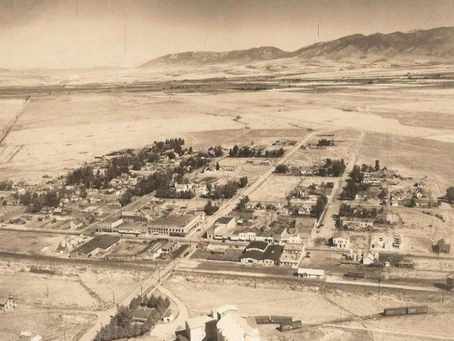Over the past years, Belgrade has grasped constant growth. Many factors are contributing to the growth of the city however most of it is because of the different life perspectives of the residents. Locals use the progress as a way for Belgrade to define itself in a contemporary way while still embracing its origin as a western town with a farming and ranching history.
An entrepreneur, Thomas B. Quaw, discovered land approximately ten miles west of Montana’s Bozeman down the newly surveyed railway of the Northern Pacific. The area that he discovered was to his liking thus he applied to become a full-fledged town for Belgrade, Montana with Montana’s Gallatin County Courthouse. Many European financiers funded the Northern Pacific line to be completed at that time. To express thankfulness and gratefulness to the Serbian investors who aided financially on the project for the Northern Pacific Railroad, the town was named after Serbia’s capital, Belgrade. During the early 1990s to 1930s, the town of Belgrade pursued to expand adding agricultural and professional businesses as it commences the appearance of an established community. Although the conjecture in the community decelerates, the Great Depression causes damages, and the town settled into the silent farming community and remained like that for an extended time. The land grazed and tilted until the end of World War II.
Belgrade regained its affluence after the Great War. Many businesses further developed and even shifted to larger facilities. The once silent streets sprang up new businesses. As a community committed to education, Belgrade maintained its excellent school systems with the help of its proactive members of the community. Throughout this time local families managed most of the businesses in town with a well-founded commitment to the community. Belgrade has undergone another growth spurt and tremendous expansions with striking realty sales from the late 1980s to the early 1990s. Houses were constructed on vacant lots allowing the population to increase in town.
In the late 20th century, commercial properties formed from the businesses, speculators fostered open land, investors bought ranches, and part-timers desired recreational properties. City officials, community members, school administrators, and local business individuals sustain to work together to help the expansion of existing businesses and bring new ones. Simultaneously, Belgrade has founded itself as an unbeatable small-town living experience and independent community with an exceptional school system and services. Despite some individuals that left the business community and their homes in Belgrade, the city is over again thriving and remains strong to its community commitment.
As one of Montana’s fastest-growing communities for the last years, Belgrade establishes an outstanding school system as well as an “open arm” approach to transportation access and business. Locals and visitors will find convenience while traveling with the U.S. Interstate Highway System I-90, and the regional airport of the Gallatin County. The city of Belgrade attracted varieties of business and technology including biotechnology, manufacturing, retail, and agricultural businesses.
The growth plan of Belgrade calls for the expansion of the community to diversify the economic base of the city and provide more job opportunities for its local residents. All of today’s Belgrade secures its brighter future from the city’s colorful and rich history.


